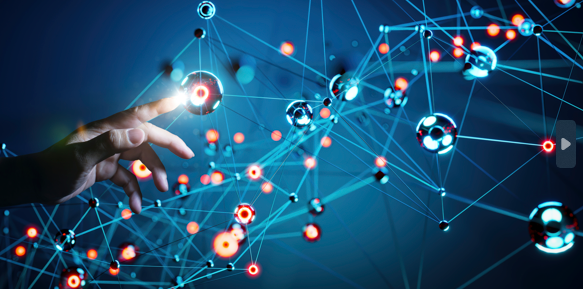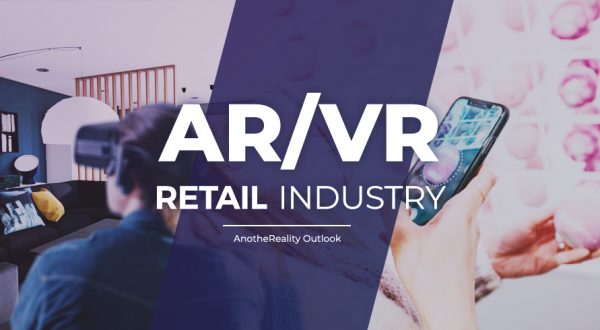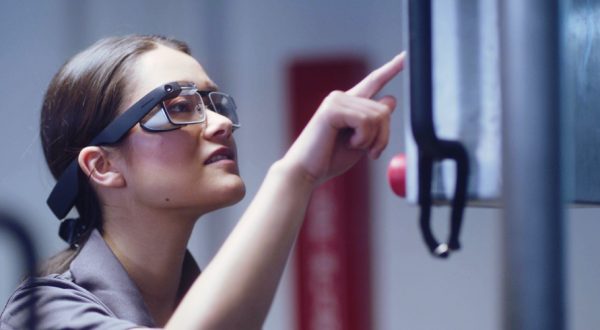Is social distancing taking a toll on you? What will happen to events? How can salespeople and account managers visit prospects and clients without the risk of getting sick? Keep calm and go virtual. Immersive realities are currently a powerful tool not only to bridge the emotional gap imposed by distance but also to solve practical problems and make otherwise inhibited activities possible.
The impact of social distancing on business: 3 key problems
Although the pandemic has forced many of us to undergo a “personal digital transformation” and manage many appointments via conference calls, no business can survive in isolation for long. While a sudden transition or the enhancement of e-commerce might help in some B2C cases, several problems arise in the B2B sector.
#1 – What will happen to trade fairs, events, and product presentations? We all know that in certain industries, these moments are crucial for interaction between the customer and the product and for meeting the entire team of companies.
#2 – How can the decline in foot traffic to stores and showrooms be compensated? The interaction between the customer and the product, especially for new releases, often requires an indispensable physical experience.
#3 – How to manage teamwork and corporate life? True human collaboration cannot be achieved solely through Zoom and similar tools. Additionally, there are various issues related to training, especially technical training, which would require physical presence.
How can immersive technologies provide solutions?
Here is our answer: we develop solutions for dematerialized experiences that replicate the dynamics of physical spaces, even in their absence, and harness the full emotional power of immersive technologies.
Augmented reality and virtual reality against Covid: these are the interventions we consider most urgent – dematerializing certain marketing/sales processes and virtualizing collaborative work.
DEMATERIALIZATION OF SALES PROCESSES
With undeniable advantages, especially in the B2B context, we can completely virtualize the physicality of a sales process while maintaining human interaction between salespeople and users as the core value of the experience. We call this scenario the 360° Experience Center.
Imagine entering a virtual showroom. Through a website, an avatar invites you to choose a salesperson and available time slots. On the appointed day, the customer and salesperson meet in a virtual room, with the opportunity to see the new products in an immersive environment. They can chat, engage in video conferences, view products in 3D, and simulate a try-on experience. It is even possible to integrate a feature that allows for placing an order, which is then notified to the salesperson’s inbox.
The advantages are undeniable:
- It brings emotion into the interaction between people and between people and objects.
- It saves costs (travel, logistics, location).
- It ensures people’s safety.
- Above all, it does not replace people but enhances their capabilities.
DEMATERIALIZATION OF COLLABORATION AND TRAINING
With a focus on internal company dynamics, we can completely dematerialize collaboration between internal teams and activities such as onboarding, training, and team building. Welcome to the Virtual Convention Center.
The scenarios are diverse, ranging from a company meeting to virtual workshops, onboarding new teams, and a board of directors meeting supported by immersive analytics, where data and performance KPIs are visualized in space with the ability to interact physically.
Consider a sales meeting: Participants can enter a virtual theater from their desktops. Each person has an avatar. They can attend a 3D presentation, virtually be present “inside” the conference, interact with colleagues, and ask questions to the keynote speaker, all without leaving their homes.
The benefits are equally promising:
- It preserves events, both institutional and non-institutional, that would otherwise need to be avoided.
- It protects employees.
- External stakeholders can be invited to the same environment.
- It saves on travel costs.
The 3 most requested use cases for dematerialization:

#1 – PRODUCT SHOWCASING. Have you ever done an augmented webinar? Through a web streaming application, it’s possible to organize webinars that support large numbers of participants. During the event, using an augmented reality app, we can showcase products and services to the attendees. It opens up a world of holograms and informative content that greatly enriches the webinar experience. This is ideal for improving the product experience. A similar approach can be applied to e-commerce and catalogs: we can integrate your catalog or e-commerce platform with spatial holograms, create virtual demonstrations, and develop interactive showcases and mirrors to allow customers to “experience” the product.

#2 – SPATIAL COLLABORATION. It’s a common challenge for everyone: how to continue facilitating safe interaction between people. Instead of meeting in a physical meeting room, you can gather in a virtual meeting room, work on the same document, use 3D viewers only when necessary, and interact with each other and the space.

#3 – AUGMENTED REMOTE SUPPORT. This is an excellent solution for both remote training and technical support. With an augmented or mixed reality application, it’s possible to guide operators through the entire process of managing machinery remotely and securely.
Augmented reality and virtual reality against COVID: assisting businesses
There is a need for smart working, not only in terms of remote work but also in terms of identifying new smart ways to manage processes and activities. In this sense, immersive solutions are not a cure-all, but they do provide substantial assistance in certain contexts.
What about headsets? Not everyone is ready for full virtualization. However, the transition can be gradual. You can start with 360° web solutions and then scale up, gradually incorporating special devices, perhaps activated only on certain occasions for important clients or teams that truly need them.


